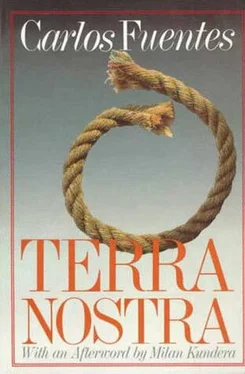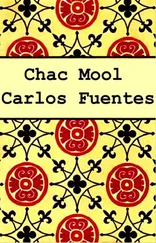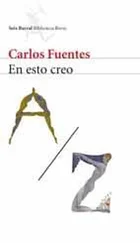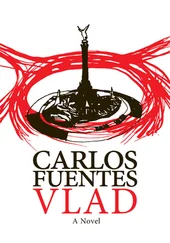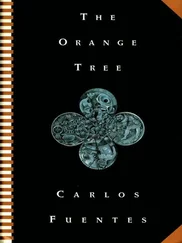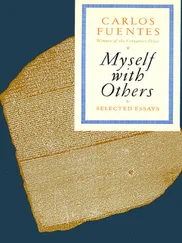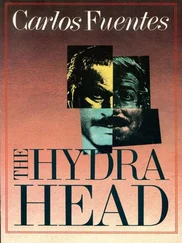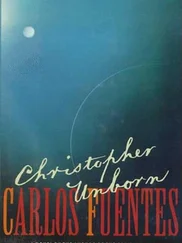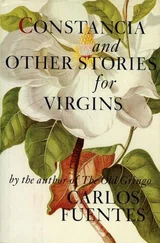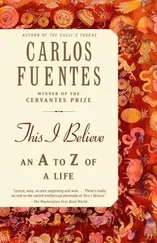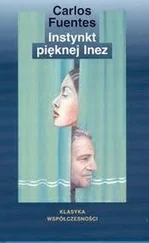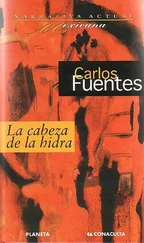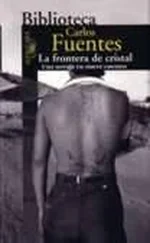“I lack the strength, Ludovico.”
“They will help you. That is why I have brought them here. The Sibyl said: a cross upon the back, six toes on each foot. They will set in motion the third age.”
“The Antichrist. How shall I know him?”
“This is your opportunity to re-create history, Felipe. Señor: conquer yourself.”
El Señor had no strength for further conversation; and that night, while Ludovico and Celestina slept beside the ash-filled hearth in the bedchamber, he again removed the severed head from the coffer, and carried it to the chapel.
He stopped before the space left vacant by the flight of the painting from Orvieto. He took the head by its long gray locks and raised it high, exhibiting it before the altar. The half-closed eyes of the head blinked. El Señor wanted to scream, to throw the head on the granite floor and return to the sanctuary of his bedchamber. But as his hand trembled and the eyes of the head blinked, the empty space began to fill with form and color; El Señor stood transfixed by the miracle; as all the lines, volumes, figures, and perspectives in the painting from Orvieto had poured toward Julián’s triangle of light, now new figures, outlines, and colors flowed from the eyes of the severed head toward the space behind the altar, struggling toward composition, seeking their places, unfolding harmoniously, and finally integrating into a triptych with its three panels.
On the first of these, the left wing, El Señor saw the lost promise of an earthly paradise, harmonious clarity, a light joining together all species of creation, animal, vegetable, and mineral; from a pond painfully emerge the first beasts, winged fish, otters, thrushes; a valley enclosed by soft hills leads to a grove of orange trees and a blue lake in whose center rises, the color of the rosy dawn, the fountain of youth: unicorns bathe in its waters, swans, geese, and ducks glide across its surface; immediately behind the fountain, giraffes and elephants stand poised on a plain, and beyond them rise bluish mountains, encircled by spiraling flocks of birds; in the foreground, three figures: a naked youth, seated: the pilgrim of the new world; his face displays innocence, astonishment, and forgetfulness; kneeling beside him is a naked woman with long, copper-colored hair: she has the face of the young Celestina; and standing between them, he, El Señor, his hair longer, but the same thick lips, the same prognathic jaw hidden behind the same beard, the same eyes of serene madness, the same incipient baldness, holding the woman by one hand, offering her to the man. El Señor was delighted with this vision, asking himself how it happened that he would join that man and that woman; he stared at the beneficent tree of life under which the youth sat, palm leaves, a clinging vine, fleshy fruit; still holding high the severed head, he approached the panel depicting Paradise and with horror saw details imperceivable from a distance: a leopard fleeing with a dead rat in its jaws, a scorpion killing a toad, a dark, heavily maned, almost human beast, impossible to identify either as man or animal, devouring a prostrate body, crows nesting in the caves of the mountains and at the base of the fountain of youth, and perched in a dark circle, the timeless bird, the owl, watching over everything …
He stepped back, examining the central space of the triptych, and he saw a vast garden of delights, a universe of small human forms interwoven in successive planes to form a sumptuous tapestry of rosy flesh, bodies that resembled flowers, full of grace, the color of mother-of-pearl, entwined in chaste play, a river of flesh flowing from a lower foreground to a second intermediate plane, ending on a third plane that blends into the horizon, the whole bathed in clear blues, delicate roses, olive greens: brilliant and sweet reflections of human felicity; El Señor stared, lost in the vertigo of ideal, unobtainable sensuality; the half-opened eyes of the severed head blinked swiftly and among the figures appear monstrous animals, gigantic fishes, rapacious birds, enormous strawberries, raspberries, cherries, and plums; breast-shaped crystal covers one couple, other bodies are half hidden in the twin shells of a mussel; a solitary man is devouring an enormous strawberry with as much greed as the dark beast its victim, one man has inserted a bouquet of flowers into another’s anus and is thrashing his buttocks with a second bouquet, a crow alights upon the sole of an upturned foot whose owner, in an attempt to free himself from the bird of bad omen, is offering it an enormous plum, in the river floats a scarlet fruit from which emerges a crystal cylinder, a man inside the fruit stares at the rat sitting at the other end of the cylinder, each is staring at the other, above them on the fruit floats a bluish globe, a transparent membrane inhabited by a pair of lovers captured forever within a sphere of mirrors, a woman plunged head-first in the river, her parted legs exposed in the air, hides her sex with her hands, but upon that sex nests a crushed raspberry; the bodies, all of them, are prisoners of something, of themselves, of glass, of mirror, of the mussel, the coral, the birds, the shells, or the solitary gaze of the owl.
“Happiness and glass are quickly shattered,” the mouth of the severed head spoke in the Flemish tongue; El Señor almost dropped the head; he closed his eyes for an instant, persevered, and looked at the second plane of the central panel of the triptych; again the fountain of youth, and around it a cavalcade of naked men and women mounted on horses, unicorns, wild boars, tapirs, griffons, goats, tigers, bears, an eternal circle of delight and lamentation, orgasmic trembling and exhausted pleasure, white and black women bathing in the stream, birds perched upon their heads: peacocks, storks, and crows. El Señor quickly turned his eyes to the last, the most distant plane of the painting: a frozen mineral lake, in its center a sphere of blue steel topped by horns of pink marble, the fountain of adultery, forbidden couples, black and white, brother and sister, mother and son, father and daughter, woman and woman, man and man, surrounded by an icy world, marble plants, pearl flowers, golden trees, quicksilver streams, all watched over and encircled by four stone castles: El Señor stepped closer, the figures were so tiny, it was so difficult to distinguish the faces, and, near, they were so terrible to see: El Señor covered his face with his hand, and between the cracks of his fingers saw, yes, each face multiplied, repeated everywhere, his own, it was he, he himself, naked, he thrust in a tunnel, fed from the beak of a monstrous bird, it was Isabel, La Señora, his wife, engaged in love-making with a Negro, his mother, the one called the Mad Lady, hidden in the tower of a castle, placing one finger up the anus of a figure hidden inside a different tunnel, Felipe, little Felipe, my darling son, shall I put my finger up your little bottom? Julián and Toribio, the confessor and the astronomer, peering from inside a vegetal hut, handing an enormous fish to Isabel, the nuns, Milagros, Angustias, Clemencia, Dolores, naked, are caressing one another, cherries capping their heads, and again he, El Señor, kneeling, flowers up his anus, lashed by Ludovico, Celestina inside a crystal cylinder, an apple in her hand, is watched over by the shadows of the Mad Lady and Barbarica the dwarf, Isabel, Isabel, transformed, hairless, unpowdered, all the sadness of the world in her eyes, is staring at a diabolical mouse advancing through a crystal tunnel to eat the face of the Queen, above her in the crystal globe, the prison, Don Juan and Inés coupled in a prison of transparent mirrors, Guzmán, Guzmán is an owl with four arms and four legs, and again Don Juan, the Idiot, and the pilgrim from the new world, naked, with Celestina are plucking fruit in a forest; again, all are mounted upon steeds of passion, all are raked by the same spur, all reined by the same bridle: heaven, earth, sea, fire, wind, heat, cold, and the waxing and waning of the menstrual moon crowning the entire painting: circle, horror, passion, immutable law, warning, warning, fragility, flight, flower of a day: these were the things El Señor saw.
Читать дальше
